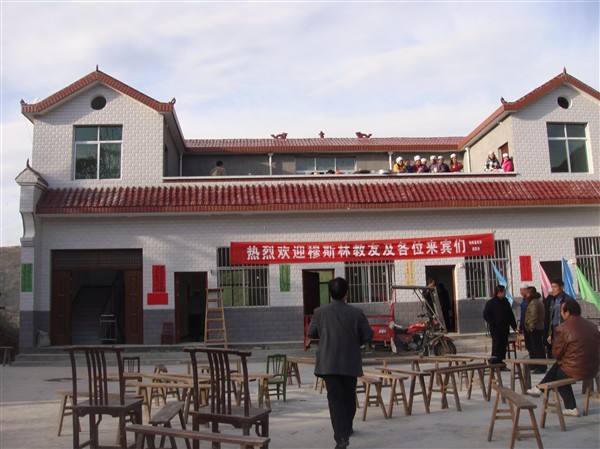Shuanghe Mosque in Zhanyi District, Qujing
Shuanghe Mosque (双河清真寺) is located in Shangshuanghe Village (上双河村), Shuanghe Community (双河社区), Longhua Subdistrict (龙华街道), Zhanyi District (沾益区), Qujing City (曲靖市), Yunnan Province (云南省). The mosque’s architectural history dates back to the Guangxu reign of the Qing Dynasty. The current structure retains the traditional Chinese palatial architectural style. Formerly known as “Shangshuanghe Mosque (上双河清真寺),” the venue was officially registered as a religious activity site on February 21, 1996, with approval from the Zhanyi County Ethnic and Religious Affairs Bureau (沾益县民宗局). The current legal representative is Tie Zhengtang (铁正唐), and the mosque holds a religious site registration certificate numbered (云)Y030280005.
Historical Background
The mosque’s present structure was established on February 21, 1996, originally under the name “Shangshuanghe Mosque (上双河清真寺).” It was later renamed to “Shuanghe Mosque (双河清真寺)” due to changes in administrative divisions. According to official religious activity site registration records, the legal founding date is February 21, 1996. The current building has undergone restoration while preserving the original layout.
Management Organization
Approved by the Zhanyi County Ethnic and Religious Affairs Bureau (沾益县民宗局), the mosque received its latest administrative license on August 9, 2019. Its registration status is listed as normal, holding the certificate numbered (云)Y030280005. The management body includes full-time religious clerics and is guided in its daily operations by the Islamic Association. As of 2025, the mosque is registered under the unified social credit code 71530303MCU0298210, with two recorded asset entries.
Architectural Features
The main building faces east with its back to the west and follows the traditional siheyuan (四合院) courtyard layout. The prayer hall features a single-eaved hip roof structure with an Islamic crescent emblem atop the ridge. The wooden components beneath the eaves showcase openwork carving techniques, and the front porch columns retain Qing Dynasty couplets carved into stone. Within the courtyard, an ancient well remains, with its stone rail inscribed with Arabic praises.

 7 Days GolfingTour
7 Days GolfingTour
 8 Days Group Tour
8 Days Group Tour
 8 Days Yunnan Tour
8 Days Yunnan Tour
 7 Days Shangri La Hiking
7 Days Shangri La Hiking
 11 Days Yunnan Tour
11 Days Yunnan Tour
 6 Days Yuanyang Terraces
6 Days Yuanyang Terraces
 11 Days Yunnan Tour
11 Days Yunnan Tour
 8 Days South Yunnan
8 Days South Yunnan
 7 Days Tea Tour
7 Days Tea Tour
 8 Days Muslim Tour
8 Days Muslim Tour
 12 Days Self-Driving
12 Days Self-Driving
 4 Days Haba Climbing
4 Days Haba Climbing
 Tiger Leaping Gorge
Tiger Leaping Gorge
 Stone Forest
Stone Forest
 Yunnan-Tibet
Yunnan-Tibet
 Hani Rice Terraces
Hani Rice Terraces
 Kunming
Kunming
 Lijiang
Lijiang
 Shangri-la
Shangri-la
 Dali
Dali
 XishuangBanna
XishuangBanna
 Honghe
Honghe
 Kunming
Kunming
 Lijiang
Lijiang
 Shangri-la
Shangri-la
 Yuanyang Rice Terraces
Yuanyang Rice Terraces
 Nujiang
Nujiang
 XishuangBanna
XishuangBanna
 Spring City Golf
Spring City Golf
 Snow Mountain Golf
Snow Mountain Golf
 Stone Mountain Golf
Stone Mountain Golf















